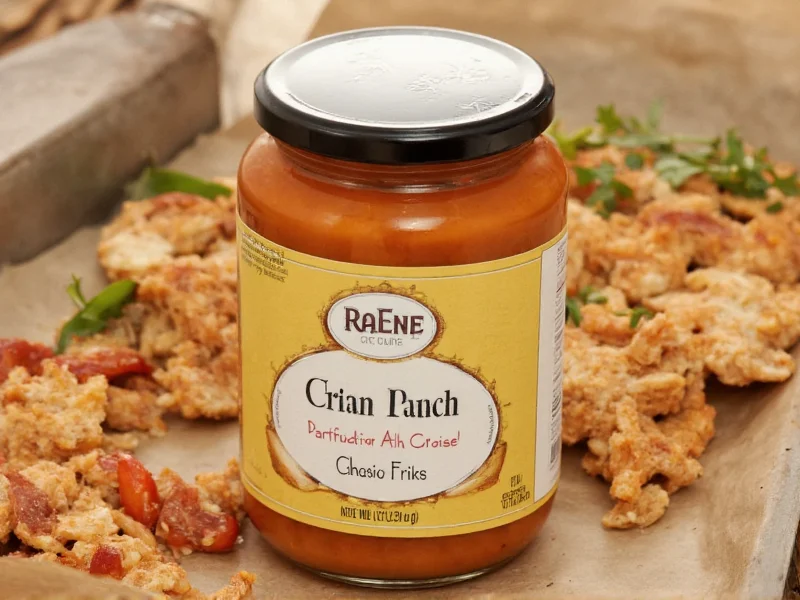When you ask what flavor is ranch, you're inquiring about one of the most ubiquitous yet misunderstood taste profiles in modern cuisine. Ranch isn't a single ingredient or a naturally occurring flavor—it's a carefully balanced combination that creates something greater than the sum of its parts. Understanding what is ranch flavor made of reveals why it has maintained its position as America's favorite dressing and seasoning for decades.
The Core Components of Ranch Flavor
Ranch flavor derives from a specific combination of ingredients that work in harmony. The foundational elements include:
| Primary Component | Flavor Contribution | Common Forms Used |
|---|---|---|
| Buttermilk | Tangy, creamy base | Dried powder, liquid buttermilk, cultured dairy |
| Garlic | Pungent, savory depth | Fresh, powder, granulated |
| Onion | Sweet, sharp complexity | Fresh, powder, granulated |
| Parsley | Fresh, grassy note | Dried, fresh |
| Dill | Subtle anise-like freshness | Dried, fresh |
| Chives | Mild onion-like accent | Dried, fresh |
The magic of ranch dressing flavor profile lies in how these elements interact. Buttermilk provides the creamy tang that serves as the canvas, while garlic and onion deliver savory depth. The trio of herbs—parsley, dill, and chives—adds freshness without overwhelming the palate. When properly balanced, these components create that unmistakable ranch taste that's simultaneously creamy, tangy, herbaceous, and slightly pungent.
Historical Development of Ranch Flavor
Ranch flavor as we know it originated in the 1950s at Hidden Valley Ranch in California. Stephen and Gayle Henson, the owners of a guest ranch, created a dry seasoning mix that guests could use to make their own dressing. This mix contained the essential herbs and spices that would define the ranch flavor profile. The distinctive what gives ranch its distinctive taste can be traced back to this original formulation.
What began as a niche product for guests eventually became a national phenomenon when the Hensons sold their recipe to a food company. The flavor profile proved remarkably versatile, moving beyond salad dressing to become a seasoning for snacks, dips, and even main dishes. This evolution explains why many people today encounter ranch flavor in contexts far removed from traditional salad dressing.
Common Misconceptions About Ranch Flavor
Several myths persist about is ranch a flavor or dressing. The most prevalent misconception is that ranch is a single herb or spice. In reality, it's always a blend—never a singular ingredient. Another common misunderstanding is that all ranch flavors are identical. In truth, variations exist between commercial brands and homemade versions.
Many people also confuse ranch with blue cheese dressing, though they're distinctly different. Blue cheese features prominent mold-ripened cheese notes, while ranch emphasizes herb and garlic elements with a buttermilk base. Similarly, buttermilk ranch isn't a separate flavor—it's simply ranch made with buttermilk as the primary liquid component rather than mayonnaise.
How Ranch Flavor Is Used Beyond Dressing
Understanding ranch flavor description helps explain its remarkable versatility. Today, ranch flavor appears in products far beyond traditional salad dressing:
- Seasoned potato chips and popcorn
- Flavored tortilla chips
- Seasoned popcorn and snack nuts
- Marinades for chicken and other proteins
- Dips for vegetables and snacks
- Flavored crackers and breadsticks
- Even ice cream in experimental culinary applications
The adaptability of ranch flavor stems from its balanced profile—it's strong enough to stand out but not so dominant that it overwhelms other ingredients. This makes it particularly effective as a seasoning for snacks where it can provide complexity without being too heavy.
Why Ranch Flavor Resonates With So Many People
The enduring popularity of ranch flavor can be attributed to several factors that address fundamental taste preferences. The combination of fat (from dairy or oil), acid (from buttermilk), salt, and aromatic herbs hits multiple pleasure points simultaneously. This creates what food scientists call a "bliss point" where multiple taste sensations work in harmony.
Additionally, the flavor profile contains elements that appeal across different cultural backgrounds. The garlic and onion components provide universal savory notes, while the herbal elements add freshness that cuts through richness. This balance explains why why does ranch taste the way it does has become such a frequently asked question—it satisfies multiple taste preferences simultaneously.
Creating Authentic Ranch Flavor at Home
For those interested in understanding ranch flavor more deeply, making it from scratch reveals the importance of each component. A basic homemade ranch dressing requires:
- 1 cup buttermilk (preferably cultured)
- ½ cup mayonnaise (for creaminess)
- 1 tablespoon fresh minced garlic
- 1 tablespoon fresh minced onion or shallot
- 2 tablespoons fresh chopped parsley
- 1 tablespoon fresh chopped dill
- 1 tablespoon fresh chopped chives
- Salt and pepper to taste
The key to authentic ranch flavor is using fresh herbs and allowing the mixture to rest for several hours before serving. This resting period lets the flavors meld and develop the characteristic ranch profile that's difficult to achieve with dried herbs alone. For a dry ranch seasoning mix (the form most commonly used in snack foods), simply dehydrate these components and grind them into a fine powder.











 浙公网安备
33010002000092号
浙公网安备
33010002000092号 浙B2-20120091-4
浙B2-20120091-4